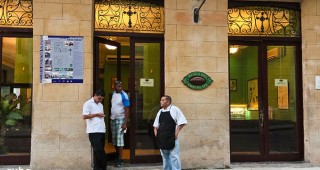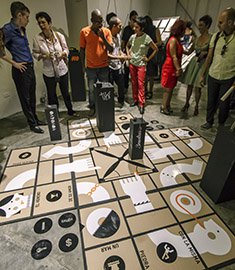
Cruz Verde LH  3
3
The corner of Amargura and Mercaderes is known as Cruz Verde (Green Cross) due to a green-painted cross affixed to the northwest-facing cornerstone. The cross is one of twelve that were to be found al …

Alameda de Paula LH  3
3
The construction of the Alameda de Paula, one of Havana’s first promenades, was commissioned by Captain General Felipe de Fondesviela, member of the court of King Carlos III, and built by architect An …

Hotel Sevilla LH  3
3
After the city walls began to be demolished in 1863, construction works for a luxury hotel began on El Prado Avenue, one of the city’s most popular promenades. Manuel López and Urbano González, owners …
 OtherAdmission: NoneTrocadero 55, entre Prado y Zulueta
OtherAdmission: NoneTrocadero 55, entre Prado y Zulueta 
Museo Palacio de Gobierno – Cámara de Representantes LH  3
3
Immediately south of the Convento de San Francisco de Asís, the squat yet imposing neo-classical building raised atop stairs served as the original Cámara de Representantes—the Republican House of Rep …
 Neo-classicalAdmission: FreeOpen: 9:30am-5:30pm Tues-SunOficios #211 e/ Churruca y Muralla, Habana Vieja
Neo-classicalAdmission: FreeOpen: 9:30am-5:30pm Tues-SunOficios #211 e/ Churruca y Muralla, Habana Vieja 
Museo del Chocolate LH  3
3
Although calling this place a museum is an overstatement, there are some intriguing artefacts relating to the history of chocolate production in Cuba. More appropriate would be to call it Café Fábrica …

Fachada del Teatro Fausto LH  3
3
Built in 1915, it was reconstructed and remodeled in 1938 according to a project which was awarded the Gold Medal by the National Architects’ Association. Its pure Art Deco façade is faced with a mixt …
 Art DecoAdmission: NonePaseo de Martí (Prado) esquina a Colón
Art DecoAdmission: NonePaseo de Martí (Prado) esquina a Colón 
Hospital Hermanos Ameijeiras LH  3
3
The Hermanos Ameijeiras hospital opened on December 3, 1982. In the late 1950s the dictator Batista planned the construction of a new building for the National Bank of Cuba on the grounds where the Ho …
 Modern
Modern 
Coche Mambí LH  3
3
Outside the Museo Palacio de Gobierno sits a railway carriage, still on rails at the corner of Callejón Churruca. It originally belonged to the Cuban Railroad Company and beginning in 1902 was used by …

Edificio del Retiro Odontológico LH  3
3
In 1953, architect Antonio Quintana won the competition for the design of a building which would house doctors’ offices, stores and other public spaces. The use of brise-soleil, popularized by the Fre …
 ModernL entre 23 y 21
ModernL entre 23 y 21 
Oratorio de San Felipe Neri LH  3
3
Originally a small church built in 1693, it was acquired two centuries later by a bank. The building was eventually returned to the city as a concert hall where lyric theater and song is performed. It …













